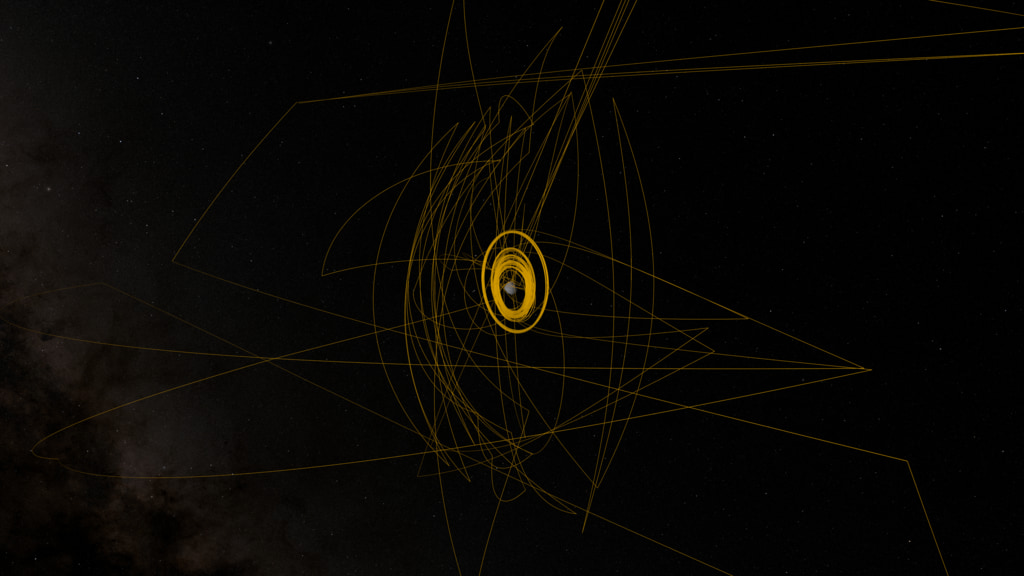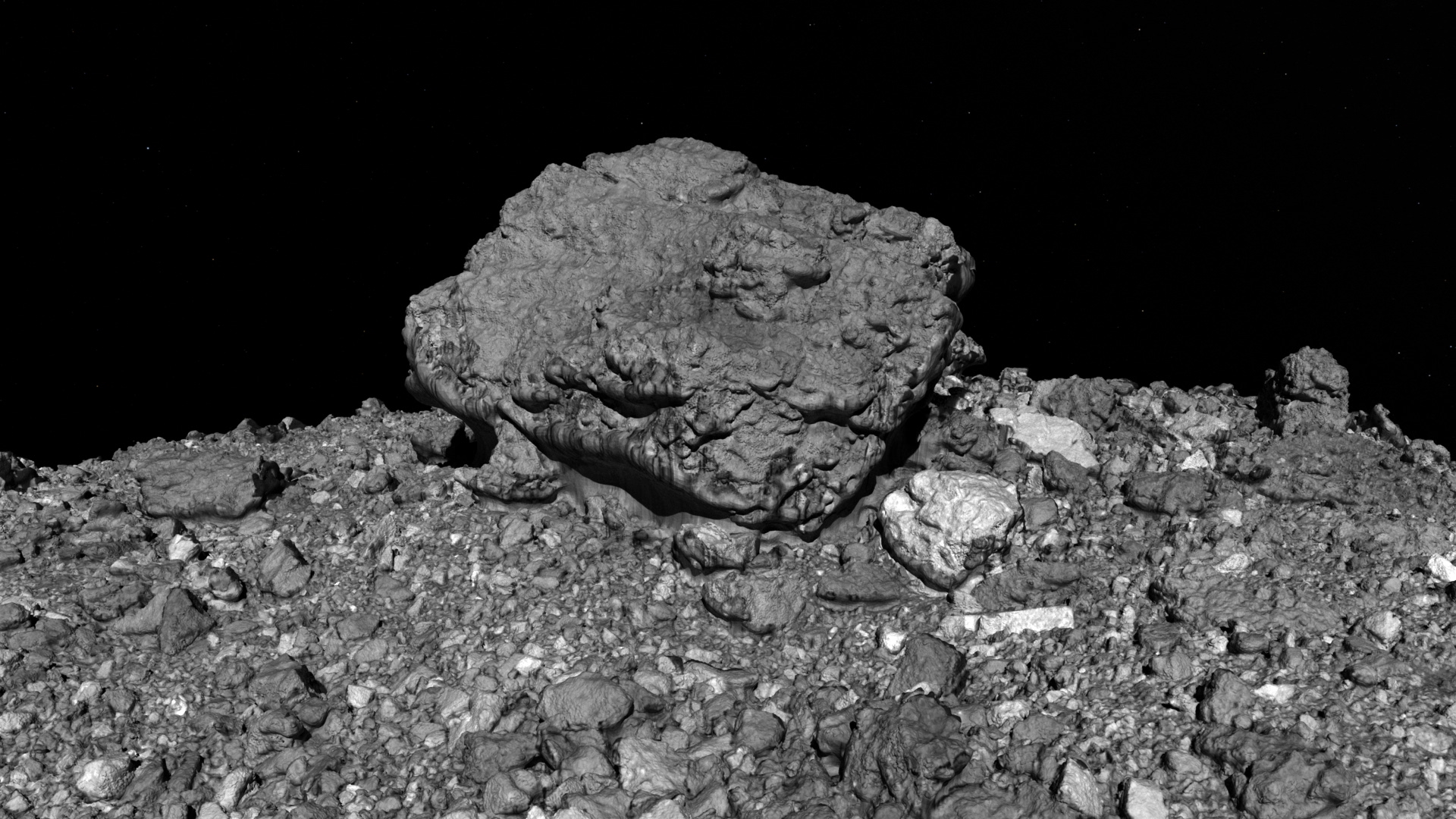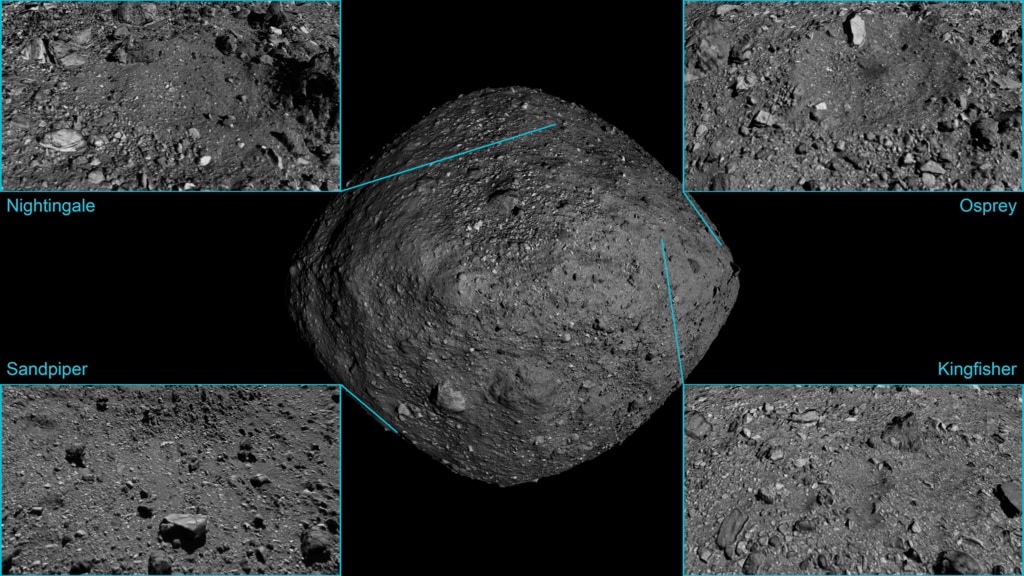Bennu visualization on the cover of Science

3d model of asteroid Bennu with three data layers.
Left to right - Albedo map with global image mosaic, carbon data, and false-color imagery.
This visualization of Bennu was selected for the cover of the November 6th special issue of Science. The image was created using high-resolution imagery and laser altimetry data from the OSIRIS-REx spacecraft. Multiple data layers were wrapped to a detailed 3D model of the asteroid, representing just a few of the recent science results from the mission.
More information about this issue of Science (as well as the final cover image) can be found here: https://science.sciencemag.org/content/370/6517

3d model of asteroid Bennu with albedo map and global image mosaic

3d model of asteroid Bennu with carbon data

3d model of asteroid Bennu with false-color imagery
Credits
Please give credit for this item to:
NASA's Scientific Visualization Studio
Data provided by NASA/University of Arizona/CSA/York University/Open University/MDA.
-
Visualizer
- Kel Elkins (USRA)
-
Scientists
- Dathon Golish (The University of Arizona/LPL)
- Daniella DellaGiustina (The University of Arizona/LPL)
- Amy A. Simon (NASA/GSFC)
-
Producers
- Dan Gallagher (USRA)
- Cat Wolner (The University of Arizona/LPL)
-
Communications lead
- Erin Morton (The University of Arizona)
- Nancy Neal-Jones (NASA/GSFC)
Release date
This page was originally published on Tuesday, February 16, 2021.
This page was last updated on Wednesday, May 3, 2023 at 1:44 PM EDT.
Datasets used
-
LIDAR [OSIRIS-REx: OLA]
ID: 1055The OSIRIS-REx Laser Altimeter (OLA) is a scanning LIDAR (Light Detection and Ranging). LIDAR is similar to RADAR, but it uses light instead of radio waves to measure distance. OLA emitted laser pulses at the surface of Bennu, which reflected back from the surface and returned a portion of the laser pulse to the LIDAR detector. By carefully measuring the time difference between the outgoing pulse and the incoming pulse, the distance from the spacecraft to the surface of Bennu was computed using the speed of light. This allowed OLA to provide high-resolution topographical information about Bennu during the mission.
See all pages that use this dataset -
Imagery [OSIRIS-REx: OCAMS]
ID: 1063The OSIRIS-REx Camera Suite (OCAMS) consists of three cameras: PolyCam, MapCam, and SamCam. These cameras captured a wealth of imagery during OSIRIS-REx’s time at asteroid Bennu. To help mission planners select a site on Bennu for sample collection, OCAMS provided global image mapping of the asteroid’s surface and more detailed images of potential sample sites. OCAMS also recorded the sampling event during the touch-and-go (TAG) maneuver.
Credit: NASA/University of Arizona/CSA/York University/MDA
See all pages that use this dataset
Note: While we identify the data sets used on this page, we do not store any further details, nor the data sets themselves on our site.






